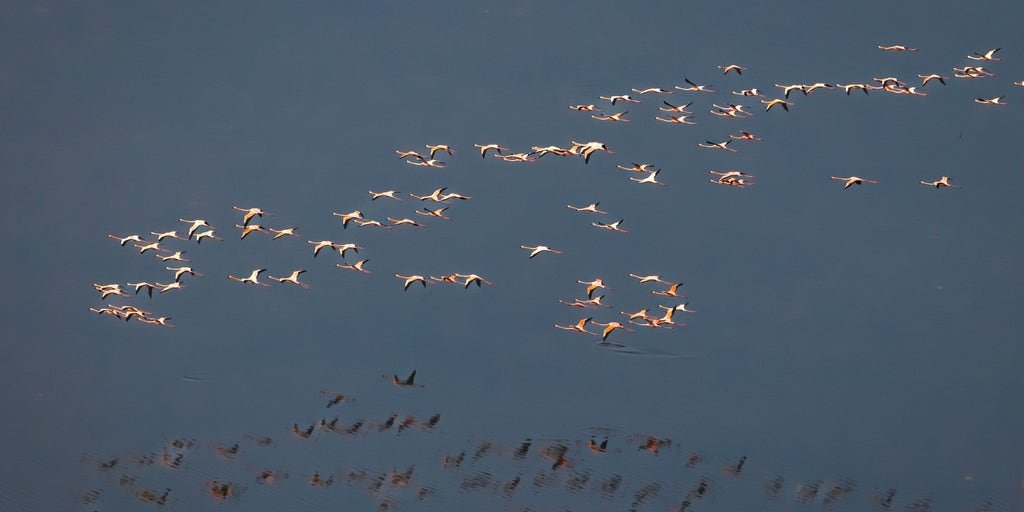Hurricane Idalia’s Unlikely Impact: The American Flamingo’s Rhapsody Across the U.S.
As observers gazed into the shallow waters of the Everglades National Park, an extraordinary sight unfolded: a flock of 125 American flamingos grazing in shimmering pools, a vibrant pink against the lush greenery. This remarkable gathering marks the largest seen in South Florida in over a decade, igniting joy and intrigue among ornithologists and wildlife enthusiasts alike. But the path these flamingos took to their temporary oasis was anything but ordinary; it was shaped by the powerful winds and swirling currents of Hurricane Idalia.
A History of Decline and Recovery
Historically, the American flamingo’s presence in Florida has been tenuous at best. Once abundant along the southern coast, their population dwindled during the late 19th and early 20th centuries due to relentless hunting and habitat destruction. According to the Florida Fish and Wildlife Conservation Commission (FWC), these birds were nearly wiped out, sparking urgent conservation efforts. Their numbers began to rebound in the late 20th century, aided by habitat protection and heightened public awareness.
“It’s remarkable to witness such a significant resurgence,” remarked Dr. Eliza Thompson, a wildlife biologist with the Audubon Society. “The efforts surrounding flamingo preservation have proven effective, but we’re now encountering new challenges, like extreme weather events.”
The Aftermath of Hurricane Idalia
In the aftermath of Hurricane Idalia, which lashed the Gulf Coast in August 2023, flamingos were spotted not just in Florida, but astonishingly far north in Wisconsin and Texas. Experts speculate that the hurricane winds disrupted migratory patterns, catching these flamboyant birds off-guard and sweeping them hundreds of miles from their native habitats. This phenomenon is not unique; bird sightings often increase in regions directly affected by hurricanes, suggesting a complex interaction between weather systems and avian migration.
- Wind Patterns: Storms can create intense wind patterns that can alter migratory routes.
- Environmental Changes: Flooding and habitat displacement can force birds to seek new areas, sometimes far from their original path.
- Public Awareness: Increasing sightings can lead to heightened public interest and conservation efforts.
Flamingos Across the U.S.
In a remarkable twist, the flamingos’ journey has sparked conversations about their geographical adaptability. While traditionally non-migratory, the American flamingo can fly long distances in search of food and habitat. “This is a fascinating case study in how environmental pressures, like hurricanes, can alter species behaviors and distribution,” said Dr. Lucas Martinez, an ecologist at the University of Florida. “It raises questions about the resilience of these birds in the face of climate change.”
To many, the flamingo’s sudden appearance across diverse locations brings hope: they are not mere survivors but adaptable thrivers, evolving despite rising storm intensity and habitat loss. Residents in Illinois, Ohio, and Wisconsin have taken to social media to share photos of these exotic visitors, fostering a community of interest and concern for the flamingos’ future.
The Role of Conservation
While the increasing presence of flamingos in unusual locations raises questions, it also presents a rallying point for community-led conservation efforts. Local organizations are taking this opportunity to educate the public about the importance of protecting wetlands and coastal areas.
“Every sighting of these flamingos can serve as a reminder of our responsibility to safeguard their habitats,” said Julie Wraithmell, Executive Director of Audubon Florida. “It’s crucial to manage both the immediate ecological impacts and the longer-term effects of climate change.”
The Future of the American Flamingo
The conversation surrounding the American flamingo’s adaptability amid climatic disruptions opens new avenues for further research and action. Illegal hunting and habitat loss may have decreased, but as climate change continues to reshape both their environment and food sources, scientists feel an urgency to assess the long-term viability of these birds. A hypothetical study by the Coastal Ecology Institute at the University of Miami suggests that several critical habitats for flamingos are at risk, further complicating their recovery.
As warming waters and shifting environmental patterns threaten their habitat, researchers are considering innovative ways to contribute to the flamingos’ resilience. Field studies and citizen science projects have proliferated, drawing amateur birdwatchers into important data collection efforts to monitor changing flamingo populations. This grassroots involvement is crucial for ongoing assessments of their habitats and survival.
Reflecting on the new trajectory of the American flamingo in the aftermath of Hurricane Idalia, one could say that this chapter reveals more than just survival against the tempest; it unveils resilience in a crucible of climate change and community awareness. From conservation efforts to academic inquiries, the journey of these vibrant birds continues to bring to light the intricate and often unforeseen connections between nature, humanity, and environmental stewardship.









